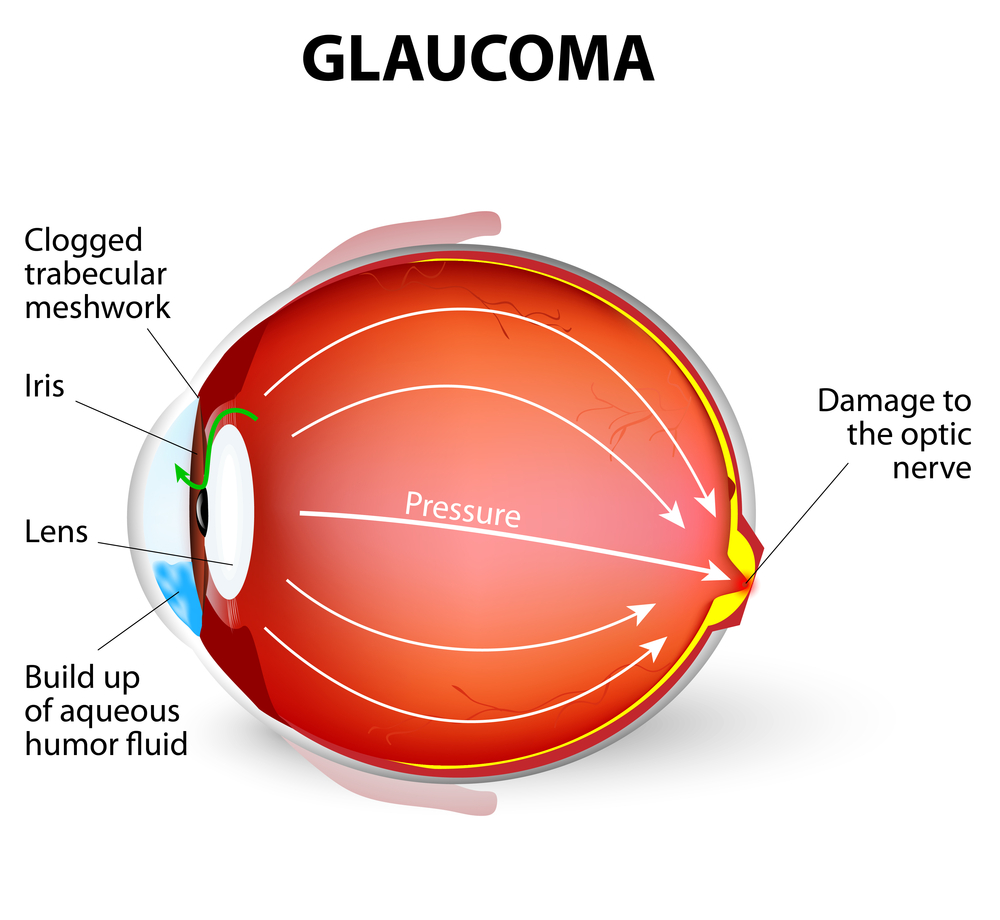
Glaucoma is a highly prevalent eye condition. Left untreated, it can cause severe vision loss.
It’s also one of the leading causes of blindness in adults over 60. Being treated for glaucoma can seem challenging simply because many patients don’t realize they have the eye condition.
There are few discernible symptoms in its early stages. Once vision loss occurs, it’s permanent and irreversible. For these reasons, glaucoma is often called the Silent Thief of Sight.
However, although glaucoma is irreversible and permanent with no cure, you can treat the eye condition. There are several treatment options available.
Which one will work best for you depends on the severity of your glaucoma and the symptoms you’re experiencing. Treatment is most effective in the early stages while the eye condition is still mild.
But to detect the eye condition in its earliest stages, you need to know how glaucoma affects your eyes, how healthy they are, and your risk for glaucoma. Keep reading to learn more about available glaucoma treatments and which one may be most suitable for you.
What is Glaucoma?

Glaucoma is the name given to a group of eye conditions that cause damage to the optic nerve. The optic nerve is a critical part of your eye that connects it to your brain’s neural pathways.
Without it, your eye couldn’t send information about what you see and translate signals into images. When the optic nerve becomes significantly damaged, it’s unable to send all the information about what you’re seeing, leading to vision loss.
Almost all cases of glaucoma occur due to high intraocular pressure, or IOP. High intraocular pressure happens when the fluid inside the eye doesn’t flow properly.
When this occurs, the fluid inside the eye builds up. The increased pressure strains the optic nerve, eventually damaging it and inhibiting your ability to see clearly.
Types of Glaucoma
There are several kinds of glaucoma. However, most cases of glaucoma that affect patients are either open-angle glaucoma or angle-closure glaucoma.
Open-Angle Glaucoma
Open-angle glaucoma is by far the most common type of glaucoma. Over 90% of glaucoma cases are open-angle glaucoma.
This type of glaucoma occurs when the primary drainage channel of the eye, the angle between the iris and cornea, is open. However, the drainage networks surrounding the eye, the trabecular meshwork, are blocked off.
Open-angle glaucoma causes a very gradual rise in intraocular pressure. Because of this, open-angle glaucoma can go undetected for years.
When symptoms first appear, they manifest as blurriness and blind spots in your peripheral vision. As the eye condition advances, you’ll start to experience tunnel vision.
Angle-Closure Glaucoma
Angle-closure glaucoma is much more rare, but when it does happen, it usually develops quickly. In this kind of glaucoma, the iris bulges, closing off the angle between it and the cornea. Closing off the drainage angle causes a fast increase in intraocular pressure.
The symptoms of angle-closure glaucoma are much more apparent and immediate. If they come on suddenly, it’s called acute angle-closure glaucoma.
In the case of acute angle-closure glaucoma, symptoms include intense eye pain, headache, nausea, vomiting, and blurred vision. If you experience these symptoms, seek emergency medical care, as immediate treatment is necessary. Immediate medical treatment is the only way to alleviate the intraocular pressure and prevent permanent vision loss.
The Best Glaucoma Treatment: Early Diagnosis

The best way to save your vision from glaucoma is to receive an early diagnosis of the eye condition. If you have open-angle glaucoma, you won’t experience any symptoms until permanent vision loss has already occurred.
However, having eye exams with your ophthalmologist at St. Luke’s at The Villages can mean spotting the signs of glaucoma before vision loss occurs. They can do this by measuring your intraocular pressure and looking at your optic nerve for signs of damage.
Scheduling eye exams regularly is the key to saving your vision from glaucoma and other age-related eye conditions. Your eye doctor can tell you just how often you need eye exams based on your risk for glaucoma. However, you may be at a higher risk of developing the eye condition if:
- You are over 55
- You are of African, Asian, or Hispanic descent
- You have diabetes
- You have high blood pressure
- You are very nearsighted or very farsighted
- You take corticosteroids and have been for an extended time
- You have a family history of glaucoma
You should have eye exams based on your risk and the recommendation given by your St. Luke’s at The Villages ophthalmologist. The best first step to treatment for glaucoma is early diagnosis.
Treatment Options for Glaucoma
There are several ways to treat glaucoma. Remember that these treatments only slow the progression of the eye condition.
Any damage already done to the optic nerve cannot be repaired and is permanent. However, these treatments can preserve your vision for years to come and are more effective if you receive an earlier diagnosis of glaucoma.
If you have open-angle glaucoma, there are different treatments your eye doctor may recommend. They may recommend a combination of treatments, especially if you have glaucoma that’s past the early stages.
Medication

The first treatment most eye doctors start with for patients with glaucoma is eye drops that lower intraocular pressure. Your ophthalmologist may even give you these eye drops before developing glaucoma if you have elevated eye pressure.
Using these eye drops before having elevated intraocular pressure can delay the development of the eye condition. However, if these eye drops are prescribed, you must take them indefinitely to lower your intraocular pressure.
Laser Therapy
Non-surgical laser therapy can help fluid flow in the eye through the trabecular meshwork. Your eye doctor often performs this treatment and will shine a laser into the eye to target the trabecular meshwork.
Surgery
Surgical procedures are often performed on patients with moderate and severe cases of glaucoma. Several surgeries can be used. Many of these surgeries create new drainage channels in the eye, either by making an opening or inserting a small medical device.
Do you need to treat glaucoma? Learn more about treating this eye condition by requesting an appointment at St. Luke’s at The Villages in Lake Sumter Landing, FL, now!









